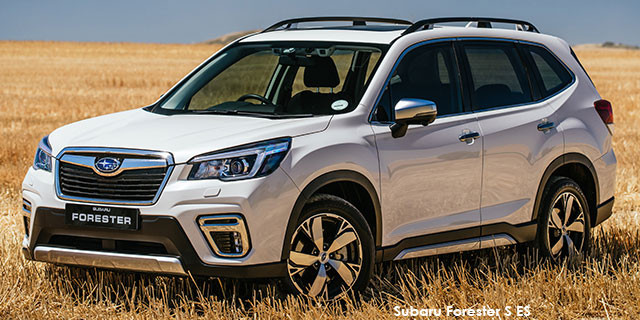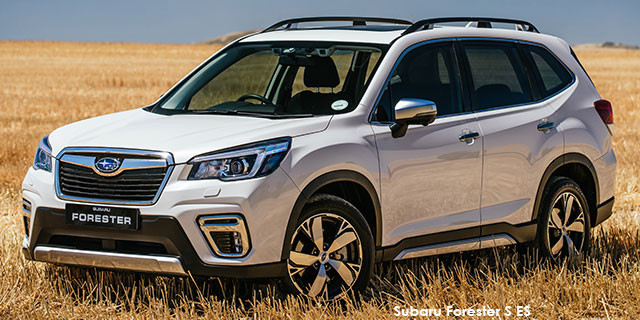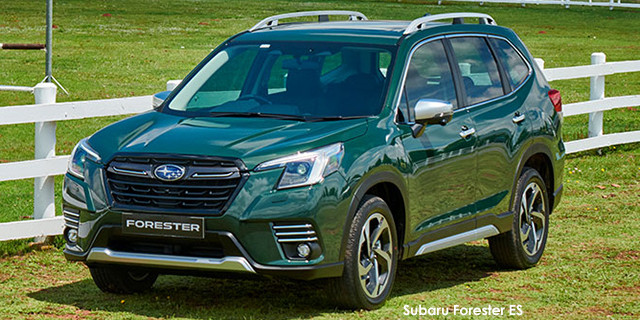The Forester gains a new platform and yet more practicality. Can it hold its own against myriad mainstream rivals?
You get the sense the vast majority of Subarus fiercely loyal customers dont particularly appreciate drastic change. And that notion was likely the key driver behind the Shibuya-based automaker’s decision to keep the new, fifth-generation Foresters exterior appearance so closely matched to that of its forebear.
Bar a taller grille here or chunkier foglamp arrangement there, the new model’s visage is largely unchanged, while its slab-sided profile has benefited from little more than additional black cladding, slightly more muscular arches and an altered line or two. The blunt backside, too, retains its boxy shape, although new C-shaped taillamps have been fitted, lending it a subtly sharper appearance.
But don’t let the overall feeling of familiarity deceive you; this is indeed an all-new model. Subaru has cleverly hidden numerous small changes under the fresh Forester’s finely fettled skin, some of which were made possible by dropping the stretched crossover onto its latest scalable platform (which also underpins the Impreza and XV).
Thanks to increased exterior dimensions – overall length has been extended 15 mm to 4 625 mm and width 20 mm to 1 815 mm, while space between the axles has swollen 30 mm to 2 670 mm – the cabin is even roomier than before, with luggage capacity growing to 376 litres by our measurements. Those new, two-part rear light clusters furthermore facilitate the fitment of a broader tailgate (powered and, thankfully, far faster in its operation than before), which in turn results in a more generous cargo-loading width. This is particularly useful when heaving bulky items into the 1 424-litre utility space (freed up with a simple tug on a pair of boot-sited levers).
Rear-seat accessibility, meanwhile, has been improved thanks to the deft reshaping of the C-pillars, while the wide-opening rear doors make fitting a child seat to the standard Isofix anchors – plus depositing and removing said toddler – an absolute cinch. More mature passengers seated back there, meanwhile, enjoy oodles (762 mm) of legroom as well as dedicated ventilation, a brace of USB charging ports and handy three-part seat-back pockets.
At launch, the local range will comprise three derivatives, each powered by a naturally aspirated, horizontally opposed 2,0-litre petrol engine mated to all four corners via a continuously variable transmission (a manual gearbox has not been developed for the fifth generation). While the outgoing line-up also featured a more powerful 2,5-litre unit (an updated version of which is offered in numerous other markets) plus a turbopetrol engine, Subaru Southern Africa has – for now, at least – opted to offer only this tried-and-tested powerplant in our market.
The flat-four has, however, come in for a few changes, with the Japanese brand claiming to have redesigned four-fifths of its internals. Peak power increases slightly to 115 kW, while maximum torque falls two units to 196 N.m, ostensibly at the altar of efficiency (for the record, we managed a fair 8,7 L/100 km on our standard fuel route).
In practice, though, this powertrain – previously employed only by the entry-level Forester – feels somewhat breathless, even in the sportier of the two driving modes ... and even at the coast. Full twisting force arrives only once the tachometer needle touches a lofty 4 000 r/min (with peak power on tap at 6 000 r/min), forcing the driver to rev out the engine should anything more than middling pace be required.
As a result, refinement (and fuel economy) suffers, something only amplified by the presence of that CVT. While Subaru’s Lineartronic is undoubtedly one of the best-behaved examples of this oft-maligned form of transmission, even its expanded number of artificial steps (now at seven), the fitment of paddle-shifters and various tweaks to “better match engine noise and acceleration” can’t prevent that dreaded drone under even moderate throttle applications. Push harder still and the artificial steps bizarrely all but disappear.
Driven with restraint, the engine quietens down, although road noise – even at city speeds – is noticeable. At a lower pace, the ride feels a touch under-damped (despite a fair amount of body roll through the bends), with the suspension exhibiting a tendency to crash slightly over sharp ridges. Pick up the pace, though, and that new, stiffer architecture helps deliver an excellent highway ride, affording the Forester a lovely loping gait.
With an unchanged ground clearance of 220 mm and 55-profile rubber wrapped around this variant’s standard 18-inch alloys, the Forester is still more than happy to tackle tricky gravel roads. This flagship model furthermore boasts two dedicated X-Mode settings (accessed via a rotary controller sited alongside the new electronic parking-brake button) for use off tarmac; the first optimising the engine, transmission and braking system for dirt, and the second for mud.
While the driving position is suitably raised and the leather-trimmed front perches broad and comfortable, one tester mentioned limited adjustment planes on the powered pilot’s seat (it does, however, feature a memory function), suggesting Subaru could have included lumbar support and a cushion extension function on this range-topper. Still, those front pews do afford the driver a commanding view of the road ahead and add to the Forester’s outstanding all-round visibility (thanks to particularly generous glass areas and slender pillars).
Fit and finish, too, are impressive, with descriptions such as “very well built” and “durable” peppering our test notes. The centrally mounted eight-inch touchscreen infotainment system (compatible with Apple CarPlay and Android Auto) also garnered plenty of praise, proving simple to use and responding swiftly to finger prods. The system is joined by a highly configurable 6,3-inch LCD screen perched atop the facia, offering a variety of useful readouts.
That second screen furthermore doubles as a side-view monitor, displaying a video feed projected from a camera mounted on the underside of the passenger-side door mirror and working in conjunction with the standard reverse camera to make manoeuvring into tight spaces a breeze.
Although strangely going without auto-dimming mirrors, this top-spec model’s equipment tally is particularly generous, offering items such as steering-responsive LED headlamps, an electric sunroof and a nine-speaker Harman Kardon sound system as standard. The brand’s EyeSight driver-assistance technology – run through a pair of stereo cameras mounted at the top of the windscreen – is also included, adding adaptive cruise control, lane-departure warning and pre-collision braking functions.
TEST SUMMARY
As Subaru's bestseller globally (largely thanks to its immense popularity in North American markets), the new Forester simply had to look and feel very much like its predecessor. And, despite its fresh underpinnings, it has accomplished that goal, while also taking small steps forward in areas such as roominess, on-board technology and interior build quality.
In South Africa, though, the brand needs to broaden a small fan base rather than simply maintain a substantial one, something this new model is unlikely to achieve. While current Forester drivers upgrading may appreciate the familiarity, it's doubtful the fifth-generation version will trouble its many mainstream rivals in the sales charts, with this model ultimately scored down due to its underwhelming engine.
While the 2,0i-S ES variant's standard specification list is satisfyingly lengthy, we can't help but feel all that kit would have been better paired with a punchier powerplant. Heres hoping there are plans to add more engine options to the range.
*From the December 2018 issue of CAR magazine
ROAD TEST SCORE

|

|

|
Original article from Car
See Full Subaru Forester price and specs here












